First performance 6 November 1924 | Written 1923 | |
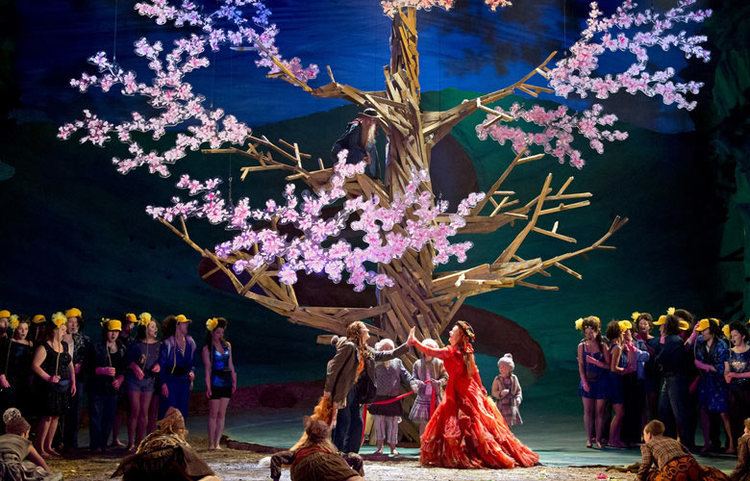 | ||
Other title Adventures of Vixen Sharp-Ears Premiere 6 November 1924 (1924-11-06)National Theatre, Brno Characters Zlatohřbítek, Chocholka, Lapák the dog, Pepík Similar Jenůfa, The Makropulos Affair, Káťa Kabanová, From the House of the Dead, Šárka | ||
The Cunning Little Vixen (Czech: Příhody lišky Bystroušky, lit. Adventures of the vixen known as Sharp-Ears, and, until the 1970s, generally referred to in English as Adventures of Vixen Sharp-Ears) is an opera by Leoš Janáček, composed 1921-23. Its libretto was adapted by the composer from a serialized novella (daily comic) by Rudolf Těsnohlídek and Stanislav Lolek, which was first published in the newspaper Lidové noviny. The opera incorporates Moravian folk music and rhythms. Described as a comic opera, it has nonetheless been noted to contain a serious theme. Interpretations of the work remain varied, ranging from children's entertainment to a tragedy.
Contents
- Leo jan ek suite from the opera the cunning little vixen
- Composition history
- Performance history
- Act 1
- Act 2
- Act 3
- Music
- Recordings
- Arrangements
- Films
- References
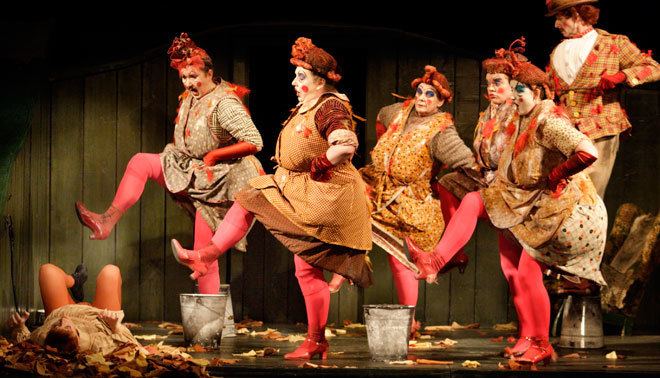
Příhody = Tales (or Adventures)
lišky = of Vixen (i.e. genitive case, one fox, female)
Bystroušky = Sharp-Ears (double meaning: pointed [ears], clever, sly)

There is no mention in the Czech of a diminutive ("little"), although this idea is included in both the German (Das schlaue Füchslein) and recent (since 1980s) English versions of the opera's name. It was probably the German name, used for the 1965 Felsenstein movie, that established the English "cunning little," ignoring the important double meaning in "Sharp-Ears." The first three audio recordings, all from the Czech company Supraphon (Neumann 1957, Gregor 1972, Neumann 1980) used, naturally, the original Czech name. Then Decca recorded the opera with the Vienna Philharmonic in 1981, and this widely circulated release made The Cunning Little Vixen the international, if inaccurate, standard.
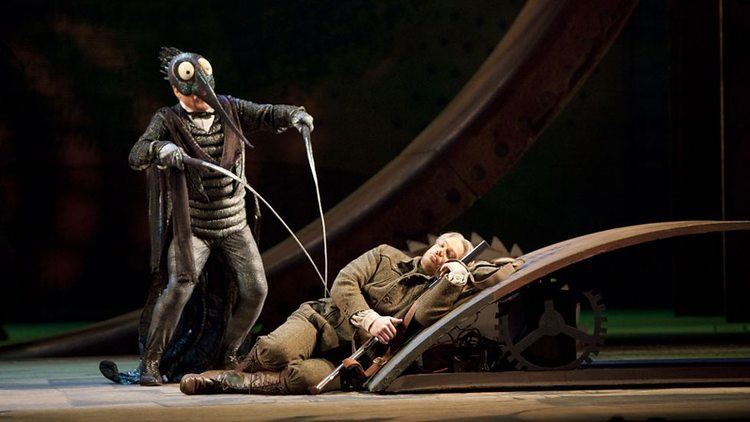
Leo jan ek suite from the opera the cunning little vixen
Composition history
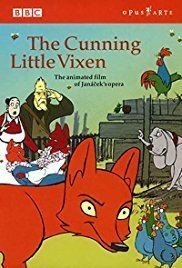
When Janáček discovered Těsnohlídek's comic-strip-inspired story and decided to turn it into an opera, he began work by meeting with the author and beginning a study of animals. With this understanding of the characters involved, his own 70 years of life experience, and an undying, unrequited love for the much younger, married Kamila Stösslová, he began work on the opera. He transformed the originally comedic cartoon into a philosophical reflection on the cycle of life and death by including the death of the vixen. As with other operas by older composers, this late opera shows a deep understanding of life leading to a return to simplicity.
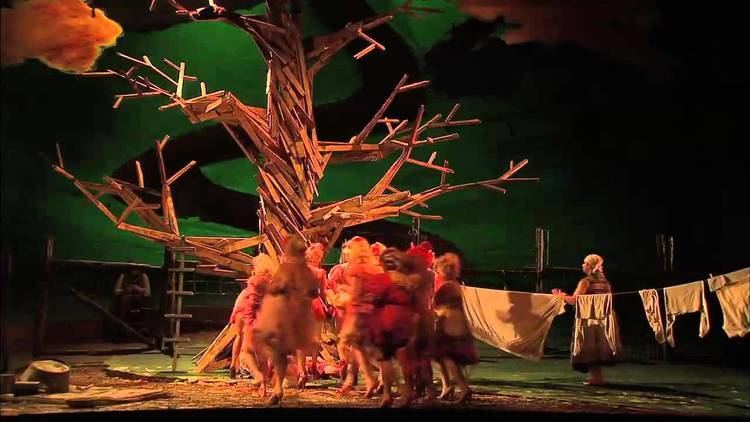
It was given its premiere performance on 6 November 1924 in National Theatre Brno conducted by František Neumann, with Ota Zítek as director and Eduard Milén as stage designer.
Performance history

The opera received its Italian premiere at La Scala in 1958 with Mariella Adani in the title role. The work was first staged in England by the Sadler's Wells Opera Company (since 1974 English National Opera) in 1961 – under the direction of Colin Graham, conductor Colin Davis, scenery and costume designs by Barry Kay. In May 2014 the Cleveland Orchestra, conducted by Franz Welser-Möst performed an innovative version directed by Yuval Sharon. This production returned the opera to its roots by utilizing animation and hand drawn video sets by the artists Bill Barminski and Christopher Louie of Walter Robot Studios. The production featured the use of hole-in-the-wall carnival cutouts to place the singers heads on the animated bodies of the animal characters. In 1981, the New York City Opera mounted a production in English based on images created by Maurice Sendak and conducted by Michael Tilson Thomas in his company debut. It starred soprano Gianna Rolandi as Vixen Sharp-Ears and baritone Richard Cross as the Forester. Glyndebourne Festival Opera staged it in 2012, directed by Melly Still, and a revival is included in the Glyndebourne Festival for 2016 with Christopher Purves as the Forester and Elena Tsallagova as the Vixen, conductor Jakub Hrůša and the London Philharmonic Orchestra.
Act 1
In the forest, the animals and insects are playing and dancing. The Forester enters and lies down against a tree for a nap. A curious Vixen Cub (usually sung by a young girl), inquisitively chases a frog right into the lap of the surprised forester who forcibly takes the vixen home as a pet. Time passes (in the form of an orchestral interlude) and we see the Vixen, now grown up into a young adult (and sung by a soprano), tied up in the forester's yard with the conservative old dachshund. Fed up with life in confinement, the vixen chews through her rope, attacks the Cock and Chocholka the hen, kills the other chickens, jumps over the fence and runs off to freedom.
Act 2
The vixen takes over a badger's home and kicks him out. In the inn, the pastor, the forester, and the schoolmaster drink and talk about their mutual infatuation with the gypsy girl Terynka. The drunken schoolmaster leaves the inn and mistakes a sunflower behind which the vixen is hiding for Terynka and confesses his devotion to her. The forester, also on his way home, sees the vixen and fires two shots at her, sending her running. Later, the vixen, coming into her womanhood, meets a charming boy fox, and they retire to the badger's home. An unexpected pregnancy and a forest full of gossipy creatures necessitates their marriage, which rounds out the act.
Act 3
The poacher Harasta is engaged to Terynka and is out hunting in preparation for their marriage. He sets a fox trap, which the numerous fox and vixen cubs mock. Harasta, watching from a distance, shoots and kills the vixen, sending her children running. At Harasta's wedding, the forester sees the vixen's fur, which Harasta gave to Terynka as a wedding present, and flees to the forest to reflect. He returns to the place where he met the vixen, and sits at the tree grieving the loss of both the vixen and Terynka. His grief grows until, just as in the beginning of the opera, a frog unexpectedly jumps in his lap, the grandson of the one who did so in act one. This reassurance of the cycle of death leading to new life gives his heart a deep peace.
Music
Apart from the Excursions of Mr Broucek, this is Janáček's lightest opera, and, despite the titular vixen's death at the end of the work, it stands in contrast to the often brutally serious nature of operas such as Jenůfa and Káťa Kabanová. In The Cunning Little Vixen, the composer moved away from the more conversational style of previous and subsequent operas in favor of a more folk-like style, and wove into its fabric some of his most experimental opera concepts (ballet, mime, and orchestral interludes).
Janáček based The Cunning Little Vixen's tonality on modes (similarly to much output during his last decade), expanding the music's harmonic range through the utilisation of the seventh and ninth chords. The composition makes frequent use of folk-influenced rhythms and "sčasovka" (personally-coined term for a short motif), while it has been noted to contain similarities to the music of French composer Claude Debussy.
At Janáček's request, the final scene from The Cunning Little Vixen was performed at his funeral in 1928.
Recordings
Arrangements
- Arrangement suitable for: Opera
- arrangement for: orchestral suite of the opera
- arrangement by: Václav Talich
- performed by: Czech Philharmonic Orchestra, co Václav Talich
- Arrangement suitable for: Opera
- arrangement for: orchestral suite of the opera
- arrangement by: Václav Talich
- performed by: Boston Symphony Orchestra, co Erich Leinsdorf
- Arrangement suitable for: Opera
- arrangement for: orchestral suite of the opera
- arrangement by: Václav Talich
- performed by: Czech Philharmonic Orchestra, co Charles Mackerras
- Arrangement suitable for: Opera
- arrangement for: entr’actes from the opera
- arrangement by: František Jílek
- performed by: Brno Philharmonic Orchestra, co Jakub Hrůša
- Arrangement suitable for: Opera
- arrangement for: music from the opera for Brass quintet
- arrangement by: František Jílek
- performed by: Brno Brass Quintet, ar Vlastimil Bialas
- Arrangement suitable for: Opera
- arrangement for: cut version of the opera for an animated film
- arrangement by: Kent Nagano, In English, texted Geoff Dunbar
- performed by: Soloists, Berlin German Symphony Orchestra, co Kent Nagano
